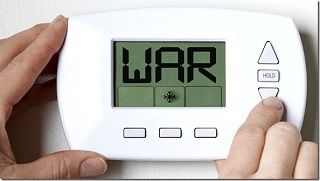From a Guest Blogger: Do It Yourself–A Simple 6-Step Energy Audit

1. Check the Loft Insulation
Having good installation in your home is one of the best ways to cut your energy use, and the place to start is in the attic. You may well have some insulation in place already, so check this first. You should have 12 to 15 inches, and you should not be able to see the joists. If you don’t have any, or if your insulation is lacking, get some put in and you can cut your energy bills significantly.
- Check Over Your HVAC System
The HVAC system is one of the areas of your home where you use the most energy, so it’s important that it is working properly and is as energy efficient as possible. Start by checking the filters, and if they are dirty you will want to replace them to stop them getting clogged up (you should ideally change them every one or two months).
You can also inspect your equipment according to the manufacturer’s instructions, but you can only do a basic check. To make sure everything is in order, hire a service and maintenance professional to check it for you annually and then they can make any repairs that are required.
You may also want to insulate the ducts if you have not already done so, and a professional can help you here as well.
- Look for Drafts
Drafts are very easy to find, and fixing them can help to cut energy waste significantly. Searching for and fixing drafts is recommended by Energy.gov, where you will find more useful tips on carrying out an audit.
One of the best things to use is an incense stick that produces a consistent line of smoke. Simply take this to all the windows, doors, fixtures, electrical outlets, fans, etc, and make a note of any drafts. You can then seal the gaps up with ease to save more energy.
- Check Your Lights
Go over all the lights in your home and find out if you are still using any incandescent bulbs. If so, change these because they use up a lot more energy than the newer compact fluorescent lamps (CFLs) or LEDs.
- Test the Hot Water Temperature
Use an outdoor thermometer to test the hot water at the kitchen faucet. Hold the sensor into the water and wait until it is at its hottest, and the temperature should be about 120°F. If it is hotter, turn down the thermostat then wait a day and retest it. Keep doing this until you reach the ideal temperature.
- Go Over Your Appliances
Go over all your appliances in your home and find out if they are energy efficient. Find out how much energy they use, and make a note of appliances that you can unplug when not in use, or where you can change the settings to make them more energy efficient. You may even want to buy new products that are ENERGY STAR rated and will use less power.
Cut Your Home Energy Use Starting Today
There is no need to be wasting energy in your home, and a simple DIY energy audit is all it takes to start making improvements. Sometimes you can reduce your energy use significantly, so carry out the basic checks and hire a professional to check anything you are unsure about or to make any changes that you cannot do yourself, such as fixing your HVAC system. Then you can start to cut your energy use and save money on your bills.
